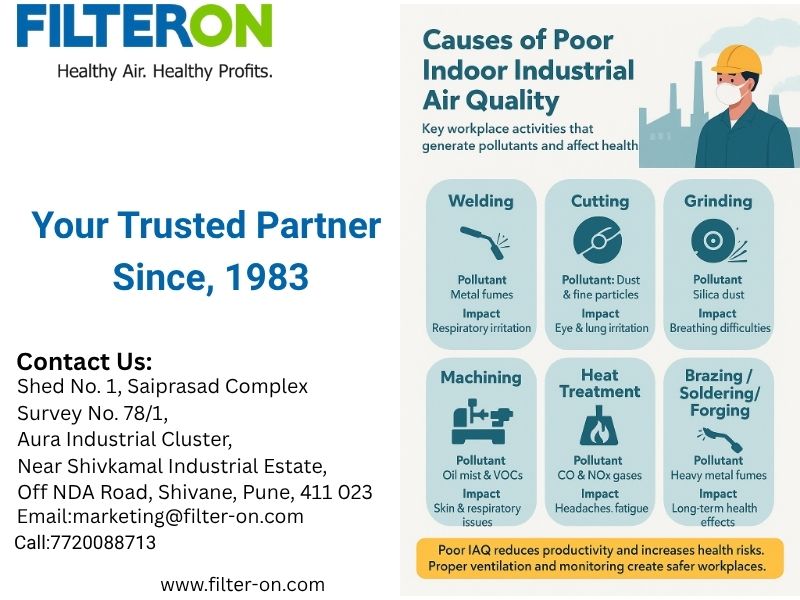Many of us might have heard about indoor industrial air quality i.e. IAQ, many times in the news associated with air pollution. Unfortunately, the topic of air pollution gets reflected in the news more often these days because of increasing air pollution and more studies associated with its impact on human society.
It is because of this massive impact of air pollution on public health as well as on the economy that indoor industrial air quality becomes a very important parameter. Maintaining proper indoor air quality is of paramount importance to minimize the huge losses. Since the majority of our time is spent indoors (in homes, offices, factories, etc.), improving indoor industrial air quality (IAQ) is the only way to tackle this issue. Also, it is found in many studies that, contrary to our perception, indoor air quality is worse than outdoor air quality and thus affects more. This essentially means air quality in our homes, offices, and factories is worse than on the roads! Though unbelievable, many experiments and analyses show that it is a shocking fact.
The term often mentioned as industrial air quality, frequently reduced and mentioned with the abbreviation IAQ, fundamentally serves as an indicative metric or measure. It’s primarily used in numerous industrial sectors and scenarios to gauge, monitor, and assess the quality or general health of the air within a particular industrial environment or setting.
AQI, i.e., air quality index level, and IAQ are not similar. Air quality refers to outdoor air quality, which everyone breathes, but IAQ indoor or industrial air quality is experienced by employees in the industrial environment. The IAQ is more hazardous than the AQ because, in an industrial environment, different types of production are running on, so workers wearing without safety masks will have various health and breathing-related issues.
In industries, there are so many processes that generate air pollution, like welding, cutting, grinding, machining, heat treatment, etc. These processes generate very high levels of pollution, which makes indoor air quality inside industries extremely unhealthy and hazardous for the people working there. It also affects their productivity on account of a loss of concentration on the job, higher levels of fatigue, erratic absenteeism, and a loss of productive years of life. This indirectly affects the performance of such companies as overall productivity goes down and such companies lose competitiveness in the market. Just imagine if our nation as a whole has to bear 8% of its GDP as the economic cost of air pollution. How much would air pollution within an industry cost? Air pollution levels inside industries are much higher than our national average air pollution levels.

Filter-On has been working on this subject for the last 40 years, providing solutions for many applications to control industrial indoor air pollution and improve industrial IAQ. Over time, this has become our main vision. We found that there are huge gaps in the industry as regards awareness of the subject, understanding of technicalities, and attitude or approach to implementation, because of which many industries struggle to achieve desired results in this area in spite of spending significant money. Because of this, a lot of money is lost, and industries still keep losing because of the unresolved issue of poor industrial IAQ.
Visit blogs to learn more about the critical features of clean air system design and air pollution control systems created by Filter On India.